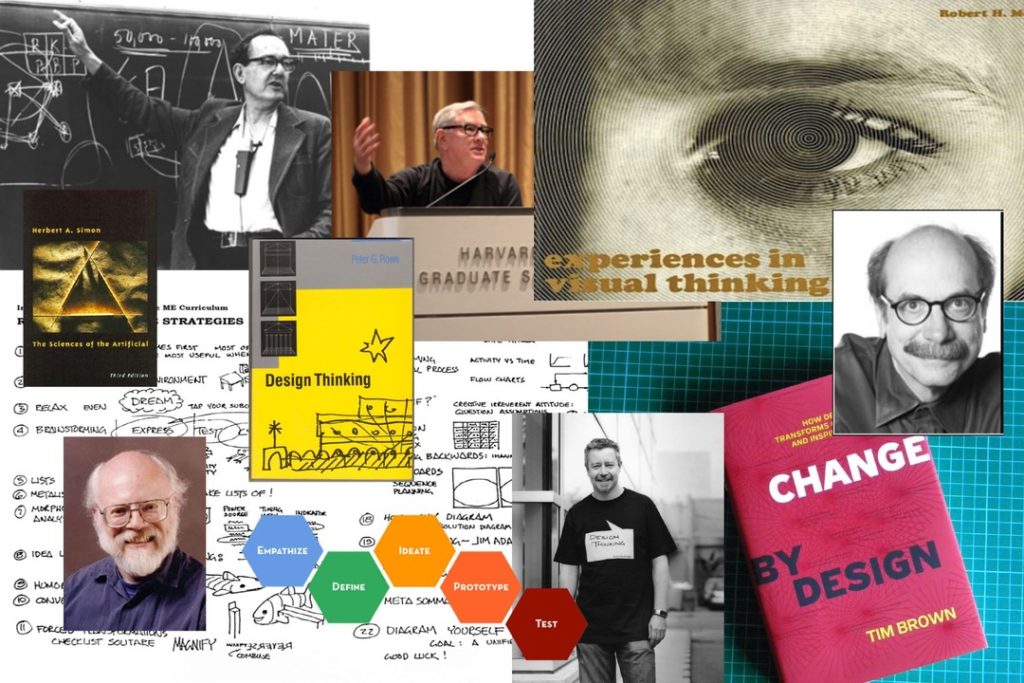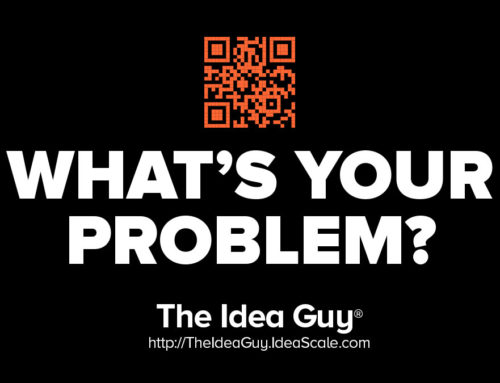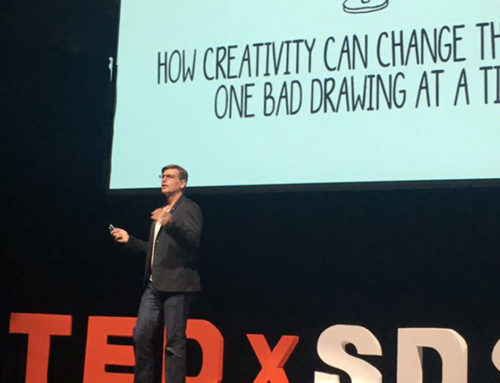A Primer on Design Thinking
The Idea Guy • November 3, 2016
As concepts like “creativity” and “innovation” continue to be introduced into academic and business conversations they are quickly followed by processes and methodologies that deliver the desired outcomes. Although the words used are generally understood, they are sometimes hard to define with any confidence.
One of the most popular concepts is becoming “Design Thinking.” Although both words are commonly understood – “design” and “thinking” – together they seem to offer some ambiguity, and until you understand what they mean together it will be difficult to work the phrase into your own conversations.
According to Wikipedia, “Design thinking refers to design-specific cognitive activities that designers apply during the process of designing.” The Design School at Stanford (aka, D School), viewed as a leader in this learning space, offers their insights with, “A methodology for innovation that combines creative and analytical approaches and requires collaboration across disciplines.”
Tim Brown, CEO of IDEO, is arguably the face of Design Thinking, explains, “Design thinking can be described as a discipline that uses the designer’s sensibility and methods to match people’s needs with what is technologically feasible and what a viable business strategy can convert into customer value and market opportunity.”
Each offers something to consider, but perhaps too much if you’re just trying to wrap your head around this for the first time. For my students and faculty, I have suggested that they consider Design Thinking as “Planned Thinking,” based on what we have learned from other thinkers that have learned to plan out their tasks in an ordered, purposeful structure.
The concept of applying design, as a “way of thinking,” in the sciences was first used by Herbert A. Simon in 1969 with his book, “The Sciences of the Artificial.” In 1973, Robert McKim refers to design engineering in his book, Experiences in Visual Thinking. Peter Rowe’s 1987 book, Design Thinking,” also describes methods used by architects and urban planners. Rolf Faste expanded academically on McKim’s work while he was at Stanford University in the 1980’s and 1990’s teaching “Design Thinking” as a “method of creative action.”
Adapting academics for business, Faste’s Stanford colleague David M. Kelly founded IDEO, a world-renowned product development company, in 1991 based on these teachings. In 1992, Richard Buchanan, a professor of Design, Management and Information Systems at Case Western, wrote, “Wicked Problems in Design Thinking,” which shared a broader view of Design Thinking addressing “human concerns through design.”
In a 2008 issue of the Harvard Business Review, IDEO CEO Tim Brown expands what the business community knew about Design Thinking, and again in his 2009 book, Change by Design, where he shares examples of how many types of businesses apply this choreographed way of thinking to their unique problems.
Two key points from this history lesson on Design Thinking
First, Design Thinking as a concept is still in its infancy. The concept was derived less than fifty years ago, and is still evolving as more people continue to join what has been viewed as a movement.
Second, there are a number of different types of thinkers who have, and do, contribute to the thinking behind Design Thinking. Scientists, engineers, architects, planners, academics, designers, and business people are all contributing to expanding this approach to solving problems.
About the Design Thinking process
Although we often teach Design Thinking as a process, some argue that it is more of a mindset – a way of thinking that is independent of ordered steps. Although I will say here it depends on whom you ask, this insight will be shared in another post. For now, let’s stick to the concept of a process and the things we do, in a predefined order, are to solve problems according to a plan.
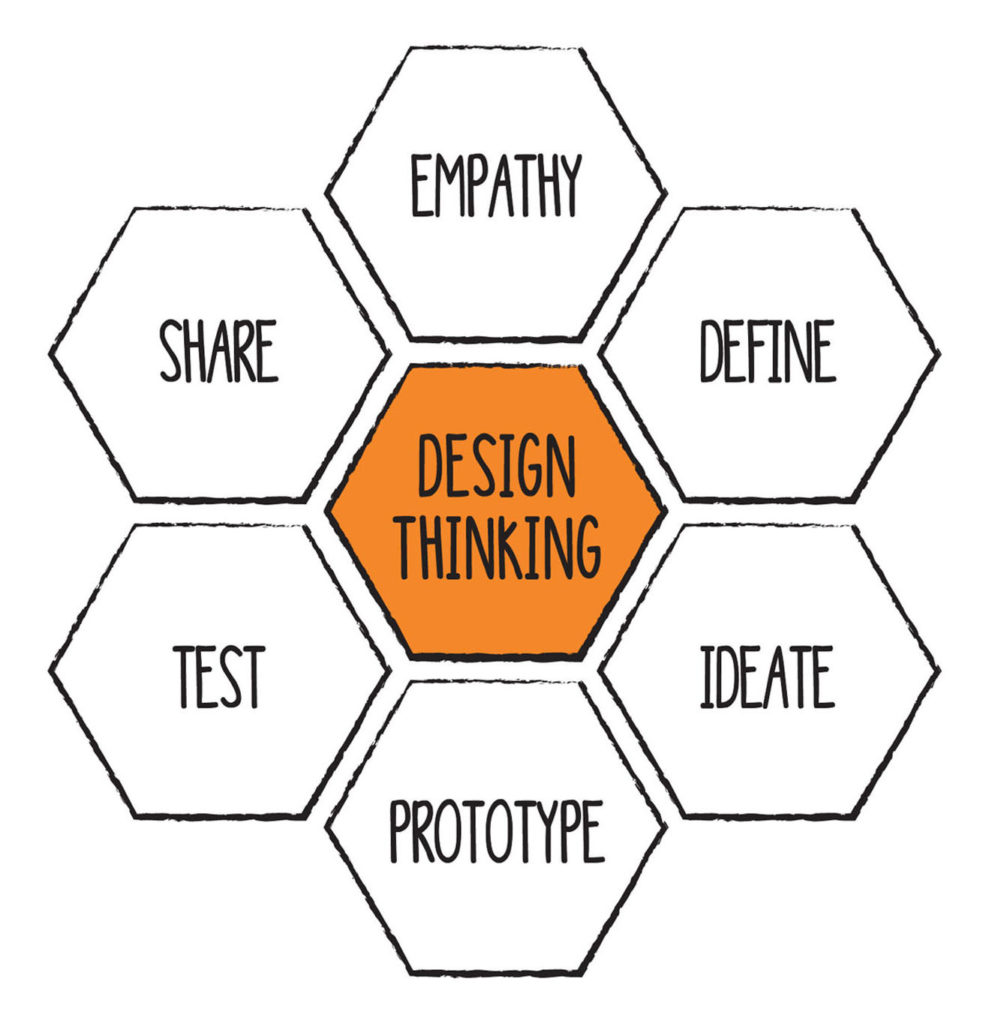
1. Empathize
In all Design Thinking, problem solving starts with understanding the people we’re solving for. Empathy, the ability to understand and share the feelings of another, is critical in getting to understand the real issues related to the problem.
Sometimes, we can research people to understand their situation. To gain more knowledge into the research we often interview these people. To really understand, we can observe them in the setting where the problem exists. Each of these tools (research, interviews, engagement) provides different types of knowledge, which can lead to different levels of empathy.
2. Define
The Define mode of the process is all about bringing clarity and focus to the design space. It is a chance, and responsibility, as a design thinker to define the challenge you are taking on, based on what you have learned about your user and about the context.
After becoming an instant expert on the subject and gaining invaluable empathy for the person you are designing for, this stage is about making sense of the widespread information you have gathered. Sometimes the problem definition may be nothing more than the art of asking the right questions at the right time to the right people. “How might we…” is the beginning, but to complete this step is to craft a meaningful and actionable problem statement. This problem statement is also what we call a point-of-view.
3. Ideate
Ideate is the mode of the design process in which you concentrate on idea generation. Mentally, it represents a process of “going wide” (or divergent) in terms of concepts and outcomes. Ideation provides both the fuel and also the source material for building prototypes and getting innovative solutions into the hands of your users.
We ideate in order to transition from identifying problems to creating solutions for our users. Ideation is a chance to combine the understanding you have of the problem space and people you are designing for with your imagination to generate solution concepts.
Particularly early in a design project, ideation is about pushing for a widest possible range of (divergent) ideas from which you can select, not simply finding a single, best solution. The determination of the best solution will be discovered later (converging), through user testing and feedback.
4. Prototype
Although a prototype is an example of what you are considering to build, the Prototype mode is the iterative generation of artifacts intended to answer questions that get you closer to your final solution.
A prototype can be anything that a user can interact with – be it a wall of post-it notes, a gadget you put together, a role-playing activity, or even a storyboard. Ideally, you bias is toward something a user can experience. Walking someone through a scenario with a storyboard is good, but having them role-play through a physical environment or an object that you have created will likely bring out more emotions and responses from that person.
5. Test
The Test mode is when you solicit feedback about the prototypes you have created from your users. In this step, you have another opportunity to gain empathy for the people you are designing for as you see them engaging with your prototype.
Testing is another opportunity to understand your user, but unlike your initial Empathy mode, you have done more framing of the problem and created prototypes to test. Both these things tend to focus the interaction with users, but don’t reduce your “testing” work to asking whether or not people like your solution. Instead, continue to ask “Why?” and focus on what you can learn about the person and the problem as well as your potential solutions.
6. Share
Share is a step somewhat unique to Idea Lab process at SDSU, which builds off of the popular model developed by the D School. In this step, we “share” our learning outside of the internal development team, pushing it out into the universe. Other users, other development teams, business interests, the media; literally anyone and everyone that may have an interest in contributing to the work.
It is in this last step that we believe the true intent of solving problems for people can be accomplished.
The model we have adopted also has a different shape than the D School model to denote the ongoing process of improvement, from step to step, as well as over time.
Getting started with Design Thinking
By no means is this everything you should know before you dive deep into a business conversation about Design Thinking, but it is a quick primer to help you understand what it is, who has contributed to its development, and what is included in the process.
Interested in learning more? Follow Idea Lab on social media, read our other blog posts, or sign up for an introductory workshop on our calendar. I’m here to help the people in our community understand the concept of Design Thinking, to learn the process, and to apply them both to the problems that help others. – The Idea Guy
